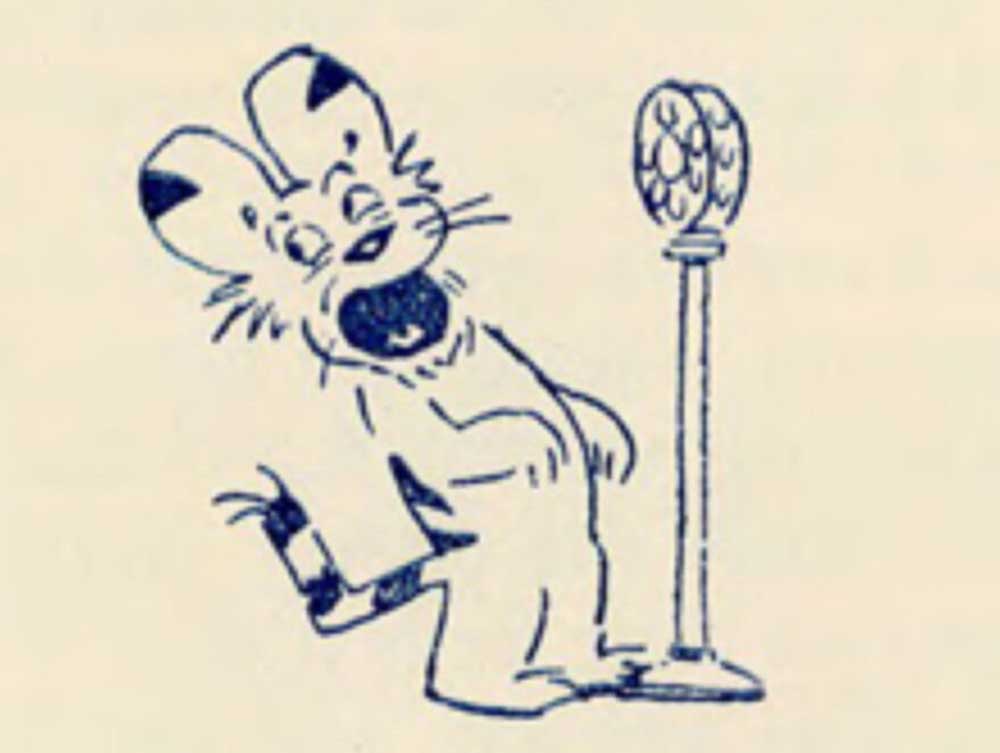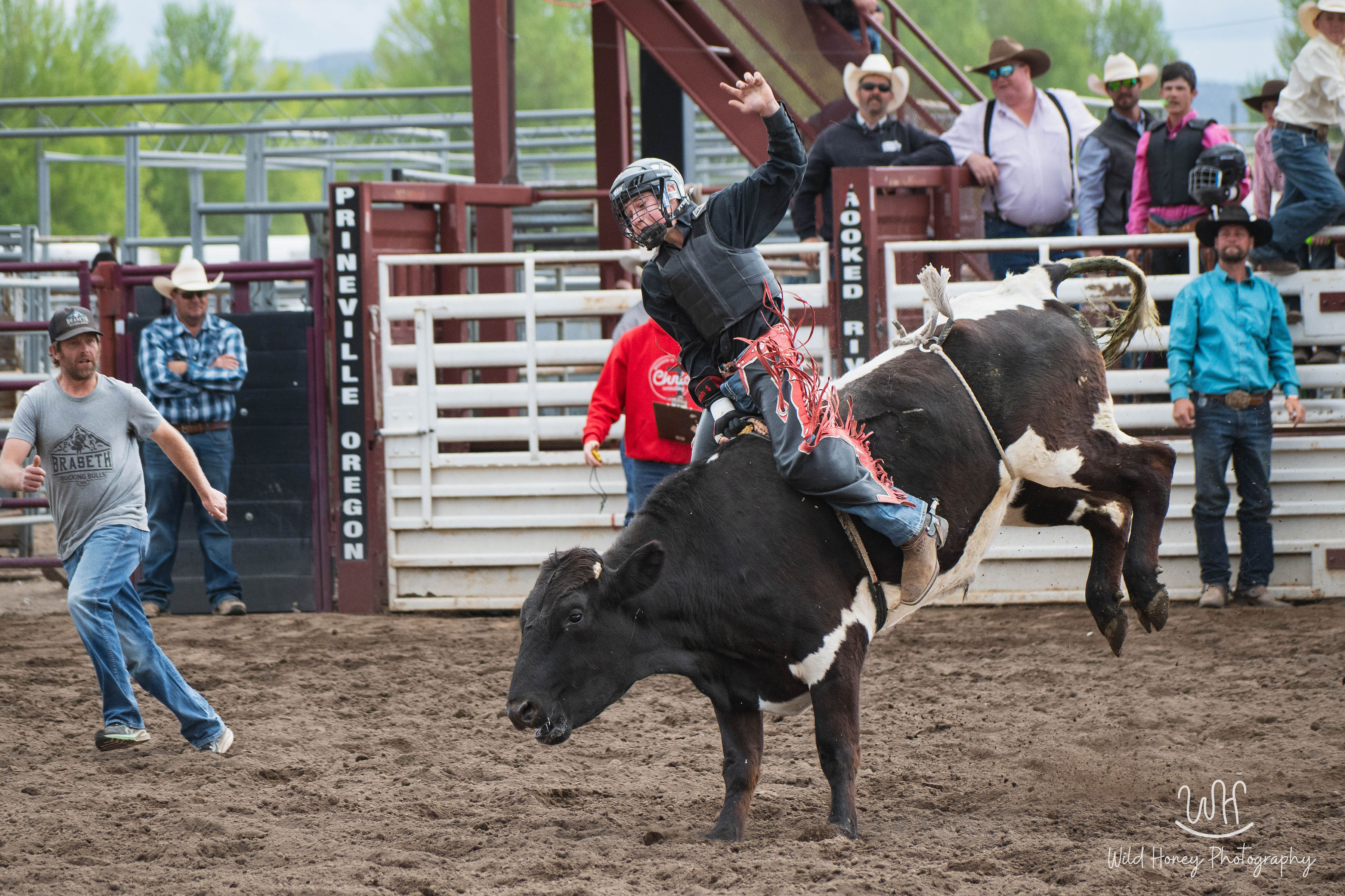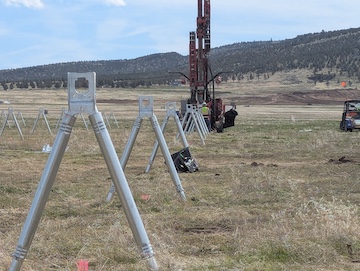Offbeat Oregon: Oregon’s own Hoot Owls changed radio history nationwide
Published 4:00 am Thursday, August 22, 2024

- Grand Sketch Tige Reynolds drew this little illustration of his familiar baby tiger mascot (which appears in all his political cartoons) to appear on the front page of the Hoot Owls Songbook.
In the decade and a half before World War II, the radio business was the hottest ticket in American business. It made vast fortunes for business moguls and considerable wealth for performers and creatives, too. And it put broadcasting at the very heart of American culture.
But none of that was even remotely imaginable just a decade or two earlier when, in March 1922, Portland Oregonian editor Edgar Piper launched radio station KGW.
At that time, broadcasting had only just been invented a few years earlier. And most people still thought of radio as a way for ships at sea to stay in touch and call for rescue when they needed to.
Also, the idea of radio advertising was still at least three years in the future. The only way for radio broadcasters to make money doing radio was by using it to leverage other enterprises — for instance, a prosperous Ford dealership might set one up as a sales outreach tool. Or, as with KGW, a newspaper might set one up as an extension of its newsroom.
The point is — nobody was making any money doing radio. Every station was essentially a vanity project.
And that meant that for a few years there, as Americans went crazy for radio there wasn’t a whole lot on the air to listen to. Signal interference was low. And folks found that on a quiet night when the air was still they could tune in radio stations from halfway across the continent, or even farther.
Which explains why, when a trio of Portland businessmen launched the world’s first radio variety show, it became almost a nationwide sensation within just a few months. At its peak, it had listeners in all but four U.S. states along with the then-territories of Alaska and Hawaii, as well as most of Canada and Mexico. All three U.S. presidents who served in office during its run — Warren Harding, Calvin Coolidge, and Herbert Hoover — were at least occasional listeners.
The show was called “The Hoot Owls,” and it may actually have been the single most influential radio program ever. It showed the industry the possibilities of a semi-scripted radio variety show, and it launched the career of Mel Blanc, the voice of most of the Looney Tunes characters.
And yet because early radio wasn’t able to be recorded, all we have left of “The Hoot Owls” is a handful of scripts and a songbook.
The show
“The Hoot Owls” show got its start when Oregonian editor Edgar Piper heard a late-night music program with a radio announcer ad-libbing DJ-style between songs. That’s another broadcasting format that would become very popular in later years, but back then had just been invented.
It gave him an idea. Piper had just launched KGW about six months before, and like all early radio pioneers, he was fast discovering that it was hard to keep it fed with quality content. So when he got back to Portland, Piper and his associate editor, Charles Callvert, took businessman Charles F. Berg to lunch to talk about trying something similar.
Berg was the owner of a high-end women’s clothing store, so he was an obvious potential marketing partner for a new radio show. But Berg seems to have been a bit miscast as store owner. His skills as an impresario were soon on display, as he went all in on the idea, roping in creative friends and brainstorming the show with Piper.
The result, on Jan. 29, 1923, was the very first “Hoot Owls” show. If writing credits had been a thing in 1923, Berg would have shared them with life insurance agent Frank Sardam and KGW announcer Dick Haller. But it was an all-volunteer effort that almost everyone Berg knew pitched in on. Portland Mayor George Baker, himself a world-class Vaudeville man, was also involved.
The show’s basic precept was that it was the weekly meeting of a fake fraternal lodge, the “KGW (Keep Growing Wiser) Order of Hoot Owls” — like the Loyal Order of Water Buffaloes on The Flintstones — presided over by Berg in character as “Grand Screech.”
It would kick off each week with Episcopal Bishop Walter Sumner (“Grand Sermon”) playing the show’s theme song on an instrument that most sources call a “wheezing calliope” but which was likely the KGW studio’s reed organ, with the stops adjusted to sound as goofy and circus-like as possible.
Then the characters on the show would go through a fake agenda, cracking jokes and carrying on, for an hour and a half, finishing up at midnight.
In addition to Grand Screech Berg and Grand Sermon Sumner, regular characters included Oregonian cartoonist Tige Reynolds as Grand Sketch; telephone-company executive Fred Spoeri as Grand Central; and former U.S. District Attorney Barney Goldstein as Grand Silence. There was also a Grand Skiddoo (Calvert), a Grand Schmooze (Barnett Goldstein), and a Holder of the Grand Goat (Richard Haller). A few years later Mel Blanc would come aboard as Grand Snicker — more about him in a bit.
A new 90-minute episode aired each week, at 10:30 p.m. on Fridays. This would turn out to be a crucial decision, because many radio stations went off the air much earlier in the night, so there was less interference and their signal could travel much farther. In fact, historian Ronald Kramer reports that at least one movie theater in Mexico City, of all places, used to wheel a radio out onto the stage at “Hoot Owls” time, scheduling its movie programming around the show, so that patrons could enjoy the madcap comedy and work on their English skills.
The show was a bit of a grind for the writers. Anyone who has ever designed a PowerPoint slideshow or video essay will know how much work it is to get 90 finished minutes of quality content ready to deliver.
But everyone participating seemed to enjoy it. Each week, Edgar Piper would start the cycle off by hosting a lunch meeting for the creative team to develop ideas for the show. As the years went on, insurance agent Harry Grannatt would become the most active member of the writing team.
One critical innovation was the membership that was offered. Listeners could apply to be “Members in Good Standing of the Order of Hoot Owls,” and upon acceptance they’d get an official membership card signed by Grand Screech Berg as well as a snappy sticker to put on their automobiles.
The member rolls eventually reached 90,000 people, and there were some very impressive names on the list — it included Calvin Coolidge and Warren G. Harding, Babe Ruth and Groucho Marx. (Herbert Hoover never joined, probably because as Commerce Secretary he was in charge of radio regulation.)
A big hit
“The Hoot Owls” was a huge hit almost right away. Everyone could see it was something completely new and different.
“The Hoot Owls do not sound like regular radio stuff,” Wireless Age Magazine wrote in its May 1924 issue. “They sound as though there was a dandy party going on in the next room and somebody had left the door open.”
It’s easy today to overlook how innovative this show really was. When it came out, radio broadcasting was brand new. There had never before been a mainstream storytelling medium that was completely nonvisual. Vaudeville and movie actors had to spend weeks memorizing their lines. And by the time they delivered them, they had lost any natural spontaneity they once had. The actors had to basically pretend the story was new enough to them to be interesting.
On the radio, though, you could be working from a script. That meant an actor could review a script once, turn on the microphone and go. It also meant actors could ad-lib a little — or a lot — knowing a written script was right there in their hands, ready to catch them if inspiration should suddenly fail. Almost from the jump, the script for “The Hoot Owls” was designed with this sort of thing in mind. A PDF of one of the scripts can be found from a link on The Oregon Encyclopedia’s “KGW Hoot Owls” page; I strongly recommend visiting and reading it. It’s astonishingly modern and hilariously funny.
Alas, no audio recordings of “The Hoot Owls” survive today, so that script is the best we’ve got. The KGW studios caught fire in 1943 and all the station’s archives were destroyed.
A long legacy
In the end, “The Hoot Owls” was killed by the outbreak of the Golden Age of Radio, which most scholars agree started in 1927 with the formation of the Federal Radio Commission and the government-guided professionalization of the airwaves.
When that happened, a whole generation of radio content became obsolete almost overnight. The Wild West world of radio — full of religious evangelists and patent-medicine salesmen and wealthy amateurs playing the tech-mogul game — was outcompeted by network comedies, variety shows and soap operas created by well-paid professionals and financed with commercial advertising.
Pre-1927, radio broadcasters knew there was no money in the act of making radio. So all of them were using the radio to accomplish other goals; Win an election, spread the Word, or burnish their credentials as a performer. None of them were making money being on the broadcast itself.
That changed in 1927.
There’s no better example of how the professionalization of radio hamstrung “The Hoot Owls” than the case of Mel Blanc. Mel was 14 years old when “The Hoot Owls” was launched, and he had his Hoot Owls membership card within six months of its launch and appeared on the show as a guest within a year. He became a regular on the show in 1926.
But because “The Hoot Owls” was unsponsored, there was no money in it. Basically, Mel was volunteering his time and keeping body and soul together with a day job as a tuba player in various hotel and dance-hall bands.
Although he loved the gig, he couldn’t afford to keep doing it. He made multiple attempts to move to more lucrative markets, leaving and returning to Portland about three times before finally landing his professional gig in Hollywood as the voice of everyone’s favorite Looney Tunes characters.
We can never know for sure how much of an impact Mel’s “Hoot Owls” performances had on the Warner Brothers’ decision to hire him, but it’s a safe bet it was a real factor. Almost everyone on the West Coast had heard his voice by then. He was, after all, Grand Snicker.
The show carried on as best it could, a labor-of-love in an increasingly professional world. Despite Mel’s departure it continued to do well. But then came the death blow — literally: Grand Screech Charles Berg died in 1932.
Berg’s son Forrest, a.k.a. Grand Squeak, tried to carry on. But four months later, everyone agreed the heart had gone out of “The Hoot Owls” and that it was time to hang it up. Grand Squeak presided over the last Regular Meeting of the KGW Order of Hoot Owls on Jan. 6, 1933.
“KGW Hoot Owls,” an article by Ronald Kramer published in 2022 on The Oregon Encyclopedia
“Mel Blanc Project,” a collection of articles and blog posts on the Oregon Cartoon Institute’s Website
“That’s Not All, Folks” a book by Mel Blanc published in 1988 by Warner Bros.





